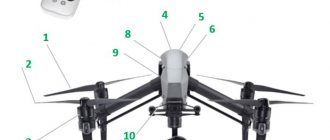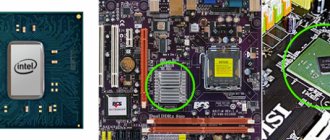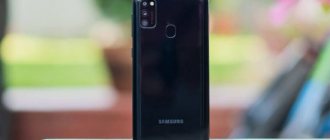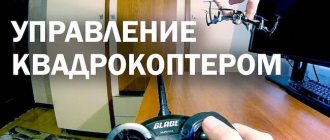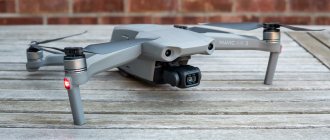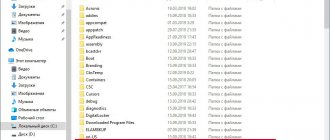Not long ago we received a DJI Phantom 3 (Professional 4K) quadcopter, managed to make about 60 flights and it was time to do our own review of this cool drone. We bought a DJI Phantom 3 PRO from a distributor in Russia for about 70 thousand rubles, this includes delivery and one battery. A little later we bought 2 more batteries. For flights, the official DJI Go application was used, which was previously called the Pilot App.
When new versions of quadcopters come out, they are still somewhat damp, with glitches and so on. DJI Phantom 3 was no exception at the beginning of its release, but we bought it with the latest updates, where all the jambs were eliminated, so the quadcopter is characterized by increased stability and reliability . A number of necessary functions have also been added, such as intelligent flight modes (Point of Interest, Waypoints, etc.).
Note: The Phantom 3 is a high-tech quadcopter and requires some knowledge and skill to be able to control it safely and keep it in the right direction. The quadcopter slogan “For everyone” is just a marketing ploy; in fact, in order not to crash an expensive drone or injure another person, you need to spend time studying the controls and theory, preferably at least flying in a simulator on a computer.
When the Phantom 3 was announced, everyone expected DJI to simply improve the Phantom 2, add power and a couple of goodies. But after purchasing and studying, it turned out that version 3 of the Phantom added a large number of different functions and capabilities for such a price; this is a truly high-tech quadcopter.
DJI 3 model version:
- Phantom 3 Standard
- Phantom 3 Advanced
- Phantom 3 Professional
In price they differ by about $250 in ascending order. The Phantom 3 Professional differs from others in that it has a camera with the ability to record video in 4K resolution.
Models differ in the color of the stripes on the body:
- The PRO model has gold stripes on board
- Advanced has silver stripes on board
Most people buy the Advanced version, which shoots photos at the same size as the pro: 12MP and video in 1080P HD resolution. The PRO version is rarely taken, this model is of interest only to professionals, since in order to process video in 4K resolution, you need a fairly powerful computer, and most video services do not yet support 4K, although YouTube began support not so long ago, but this does not This means that the user will be able to appreciate this quality - most monitors still have a resolution of 1080P or even worse - 1366x768 (laptop resolution).
By the way, Phantom 3 Standard was presented later than the Advanced and PRO versions.
General information about the Phantom 3 gimbal, camera and stabilization
DJI promotes its quadcopters under the idea of a “flying camera,” and this is exactly what the Phantom 3 version is. This is not just a quadcopter for racing and flying in the park, experiments, and so on, it is a tool for high-quality, professional photography.
This quadcopter has a new LightBridge system (primary view or first-person view), previously this system was sold in older models for more than $1400, but now it is included in the basic system. Many pilots use large tablets such as the iPad mini, the larger screen makes it much easier to control and see the details the drone is capturing and transmitting, but most still use their phone for this purpose.
Another innovation was support for GPS and GLONASS satellites (USA and Russia), which allows you to determine your location much more accurately. The engines and controls are also much more powerful and reliable, with the introduction of Active Braking, which allows the Phantom 3 to maneuver and stop much faster than previous models.
Added VPS system - visual positioning. VPS allows you to maintain stability even at a height of 3 meters from the ground. All sensors come into play, stabilizing the quadcopter in all planes - Phantom 3 will hang evenly in the air. Unfortunately, the Phantom 3 Standard does not have a VPS system.
Functions
- POI (point of interest). Configured by clicking multiple flight modes. When this mode is enabled, the copter will circle around the point of interest that we set; you can manually change the height, radius of the circle and speed. You can also control the camera tilt angle.
- Follow me. The quadcopter follows you. Recommended speed is 20-60 km/h. It has not yet learned to fly around obstacles, unlike the DJI Phantom 4.
- Course lock. Flight with fixation of the chosen course.
- Way points. Recording points. We put a point on the map, we fly, we put a second point, etc. Thus, we plot (record) a route for the quadcopter.
- Home lock. Origin fixation mode.
A good device for a lot of money. The drone price starts from $620 depending on the configuration.
Phantom 3 structure
As mentioned above, the Phantom 3 is a very technologically advanced product and to understand how it works, you can break it down into separate subsystems that work as a whole, making your drone fly and take photos and videos.
Main parts of the quadcopter system:
- Frame
- Flight controller
- Battery
- Engines
- Propellers
- Radio transmitter
- Camera gimbal
- Camera
- Remote controller
- Software (DJI Go APP)
All this is controlled by the Flight Controller (the brain of the drone), this is a minicomputer in the literal sense, it has its own processor and RAM, it also processes data that comes from various sensors of the quadcopter. There is also a radio transmitter on board that transmits all data from the drone to your remote control (Common designation for remote controls is TX)
The camera and camera gimbal are located under the bottom of the Phantom and have their own controller that controls them, and the gimbal also has small motors called servos that control the camera's tilt and rotation. The MicroSD flash card, on which photos and videos are recorded, is also located in this subsystem. The camera stabilization system is called Gimbal and here's how it works:
The remote control (TX or transmitter) is used to control the flight, it has two control sticks:
- The left stick is responsible for adjusting the gas and rotating horizontally along the axis: if you lift it up, the quadcopter will fly up, if you lower it down, the drone will slow down its engines and it will begin to descend. If the stick is tilted to the left or right, the quadcopter will rotate horizontally along its axis in the corresponding direction.
- Right stick - responsible for roll and pitch (Tilt forward/backward and left/right): if you tilt the right stick forward, the quadcopter will tilt its nose forward, this will make it fly forward. If you tilt it backwards, the drone will tilt backwards and fly backwards as well. If you tilt the stick to the left, the drone will tilt to the left, and accordingly it will also fly to the left, and vice versa, to the right, it will fly to the right.
And the last point of construction and control will be the DJI Go App application, it is installed on a phone or tablet and with the help of it all the parameters of the drone, video, Phantom 3 controls and so on are displayed on the screen.
In the following picture you can see how the Phantom quadcopter determines its position in space:
1. GPS and GLONASS sensor for determining location 2. Barometer - for determining altitude. 3. Sonar sensors in combination with a camera helps to avoid collisions with obstacles. 4. Accelerometer - determines movement in space. 5. Gyroscope - keeps the quadcopter in a horizontal position. 6. Compass - keeps the quadcopter in a given flight direction. The readings of all sensors are processed by the flight controller.
Price
Since the DJI Phantom 3 is sold in 2 different versions, there are two prices for it. The Professional version can be purchased for $1,259 from the official store, while the Advanced version sells for $999.
In stores in Russia and Ukraine, DJI Phantom 3 Professional costs about $1,500, and Advanced costs just under $1,200.
Buy a DJI Phantom 3 Professional quadcopter with free delivery throughout Russia!
Buy a DJI Phantom 3 Advanced quadcopter with free delivery throughout Russia!
Characteristics
| Total weight | 1280 grams |
| Diagonal size excluding propellers | 350 mm |
| Takeoff speed, max. | 5 m per second |
| Descent speed, max | 3 m per second |
| Horizontal speed, max., no wind | 16 m per second |
| Maximum flight altitude above sea level | 6 km |
| Max. altitude at take-off point | 120 m |
| Flight time | ~23 minutes |
| Operating temperature | 0°C to 40°C |
| Satellite navigation system | GPS/GLONASS |
How to replace the battery?
It is located in the back. To remove the battery, you must, as stated in the instructions, simultaneously press the latches at the bottom and top. The battery can be easily removed from its slot.
We recommend:
- Quadcopter for 1000 rubles
- All about dji inspire 1 quadcopter with 4k camera
- Quadcopters spl x5 ig296 for beginners
It is designed for 25 minutes of continuous operation. To prolong its service life, it is recommended not to allow the quadcopter to be fully charged when not in use.
Before using the battery, according to the instructions, you must remove the orange sticker from its side.
To check the charge level, you need to press the power button, which is located in its widest part. There are 4 warning lights on the front of the battery that will help determine its current condition. Full charging is indicated by all lamps being lit.
To turn on the battery, you need to press the button twice: the first press is made briefly, when you press the button again, your finger is held for two seconds. As soon as your finger stops pressing the button, the battery will start working.
In a similar way, turn off also in two clicks (the second lasts at least 2 seconds).
Flight
Phantom 3 is a powerful bird! During the flight, the pilot feels full control with instant response to commands. After about half an hour of flight, we already felt confident and decided to move on to photography and video recording. A couple of examples of photos and videos, because the picture is the main purpose of this quadcopter:
Do you agree that these are very high-quality photographs?
And an example video:
DJI has done everything to “protect us from ourselves”, we will improve the fail-safe functions and return-to-home functions when the signal is lost, the quadcopter will return to where it took off. We decided to test this system and flew the drone in a large field. The wind was quite strong, about 45 km/h, and the quadcopter was raised to 90 meters, despite the fact that there was no such wind on the ground, but it blew strongly at altitude. At that moment, our pilot realized that the drone was not obeying his commands, so the wind simply blew the Phantom to the side until it disappeared behind the trees.
The RTH button was pressed, but it was too late and it was assumed that Phantom 3 had fallen somewhere behind the trees.
Well, that's it, lost. We hoped that the application would show us the drone's last GPS route and followed the direction of the departed drone and listened to the noise, hoping to hear the drone whirring. But it turned out to be trucks on the highway.
As we walked, I decided to turn and look back to the point where we launched the Phantom and saw a white spot. We ran back and lo and behold, almost in the same place where we took off, our Phantom was standing 3 meters away, safe and sound! The app showed that there was still 35% battery left and the navigation sensors were ready to fly!
We were scared due to signal loss, but the Failsafe function worked and returned the drone to us!
Do not fly in strong winds, ideally only fly in calm weather!
Peculiarities
The Standard is equipped with new brushless motors, which are visually different from the mini-power units that are used on the Professional and Advanced models. During the flight, you especially feel this - the device has become somehow flexible, it responds much faster to orders from the ground.
Using the remote control, you have full control over the quadcopter, the sticks allow you to control the flight quite accurately, and the wheel allows you to tilt the camera to expand the shooting of the area. A built-in battery and a decent range of up to 1000 m make your flights impressive, easy and delightful.
Power is provided by a 4S Li-Po battery with a capacity of 4480 mAh, but due to the device’s light weight of 1216 g, the Ghost Standard can fly longer - up to 25 minutes, which is slightly more than other models in this series. The intelligent class battery will warn you in advance that the charge is low and it’s time for the copter to return to “base”.
Standard works with the all-new GO app, providing the following features:
- automatic takeoff and landing;
- stable return to base;
- Live View HD.
The company's engineers are constantly updating the functionality of the UAV - an upcoming firmware update will give this model a set of smart functions: headless flight mode, auto flight after a target, and Point of Interest.
You can change the settings because you have access to the following options:
- automatic editor helps you instantly create a new movie;
- original interface for flight control;
- radar that helps monitor the location of the multicopter when it flies at a considerable distance;
- signs inform the operator about the altitude and speed of flight, the distance to the device;
- The flight log saves the entire process for you so you can select and save the most unique moments.
You can take unique photos from above, record video clips with one click using the GO application from the manufacturer, it seems that you yourself are in the cockpit of the copter.
Accessories for Phantom
Sunny days can present a challenge for aerial photography and video. Many Phantom pilots have overcome this problem by using ND Filters on the camera. We tried some of Polar Pro on both our GoPro Hero 4 and Phantom. The filters are good and help smooth out highlights between the sky, clouds and ground.
Cases (boxes for transportation), they come in different sizes and from different manufacturers. Some cases are hard, some are soft and look more like a bag. They also have special inserts made of material resembling hardened soft foam, which will prevent damage during transportation.
Instead of a total
I am still impressed that I was able to control such a serious device. There is no doubt that drones will have a bright future. After all, the United States is already puzzled by the issue of formalizing airspace. Tsyplukhin noted that the drone is the best wireless selfie stick he has ever seen.
But seriously, I would add that the editorial office must have a drone at its disposal: “If we don’t have this, then in a year we will fall out of the trend.”
The TJ team thanks the top manager of M.Video, who wished to remain anonymous. For providing his personal drone for testing without completing any documents. That is, if we crashed the Phantom, the only thing we could send back to Moscow would be a postcard signed ¯\_(ツ)_/¯
conclusions
It's safe to say that no consumer quadcopter on the market gives you the same functionality as the Phantom for the same money. It will also be difficult to find the same set of features in more expensive drones. If you're looking for a camera quadcopter that's ready to fly out of the box and meets today's demands, look no further than the Phantom 3.
However, the presence of all kinds of sensors does not relieve you of responsibility for dangerous flights; the drone can still break down or get lost, so fly thoughtfully and confidently, and also do not fly close to people, dangerous objects and animals.
Enjoy your flights!
Phantom battery
The batteries of 3rd generation quadcopters are “smart” because they have a controller. Here the charge level is monitored, which prevents the drone from falling and crashing due to the fact that it is discharged.
Battery capacity is 4480 mAh, power is 15.2 V. Due to these characteristics, the flight time has increased compared to the previous generation, now it is 23 minutes. The only note: practice shows that shooting lasts 20-21 minutes maximum.
The batteries look the same; on the side there is a connector into which the cable is inserted and recharging is carried out. The advanced and standard versions will need 1.5 hours to fully charge the device, while the professional and se versions will take an hour.
Package
The quadcopter is delivered in a cardboard box.
Nested inside:
- remote controller;
- battery charger; blades (including spare);
- USB cable; bag for carrying blades;
- fasteners for mounting the camera;
- stickers;
- instructions.
For beginners, there is a limit on speed and flight altitude. The speed is 30 meters and the height is 120. When the pilot masters the controls, they can be increased to 500 meters.
The popularity of drones in Russia is growing
The company Skymec distributes quadcopters from the Chinese manufacturer. At the moment, they have concluded contracts for the supply of DJI equipment with the Ministry of Defense of the Russian Federation, many television companies, including VGTRK and Television of the Moscow Region, as well as various agricultural complexes.
According to representatives of Skymec, about three thousand unmanned aerial vehicles of the Chinese brand are imported and sold into the country every year, and their number is growing rapidly. Many companies and hobbyists have not yet fully understood the capabilities of drones, so they first purchase small quantities, get acquainted with the product, determine what tasks they can be useful for, and then return for more purchases.
Charger
After removing it from the package, you need to disconnect the inputs for charging the battery and the remote control. To charge the battery, the charging plug for the battery is installed in the socket located on the side surface of the battery (under its “head”).
It is easy to recognize by the contacts intended for the charger.
When the connection is complete, you can connect the charger to the network. The wavy movements of the signal lights will indicate that charging is in progress.
You can charge the remote control via a special USB cable connected to the transmitter connector located on the bottom side of the remote control.
The red glow of the indicators indicates that charging is in progress. When their color changes to green, the remote control is fully charged. It can now be disconnected from the power source.
What does the spare set consist of?
It includes:
- dampers 4 pcs.;
- hanging fasteners 4 pcs;
- landing gear cushions 4 pcs;
- wrench 1 pc.
The package includes: 4 pcs. each propeller, which can be distinguished externally by the color of the caps. Screws with brown caps must be tightened clockwise, and screws with gray caps counterclockwise.
